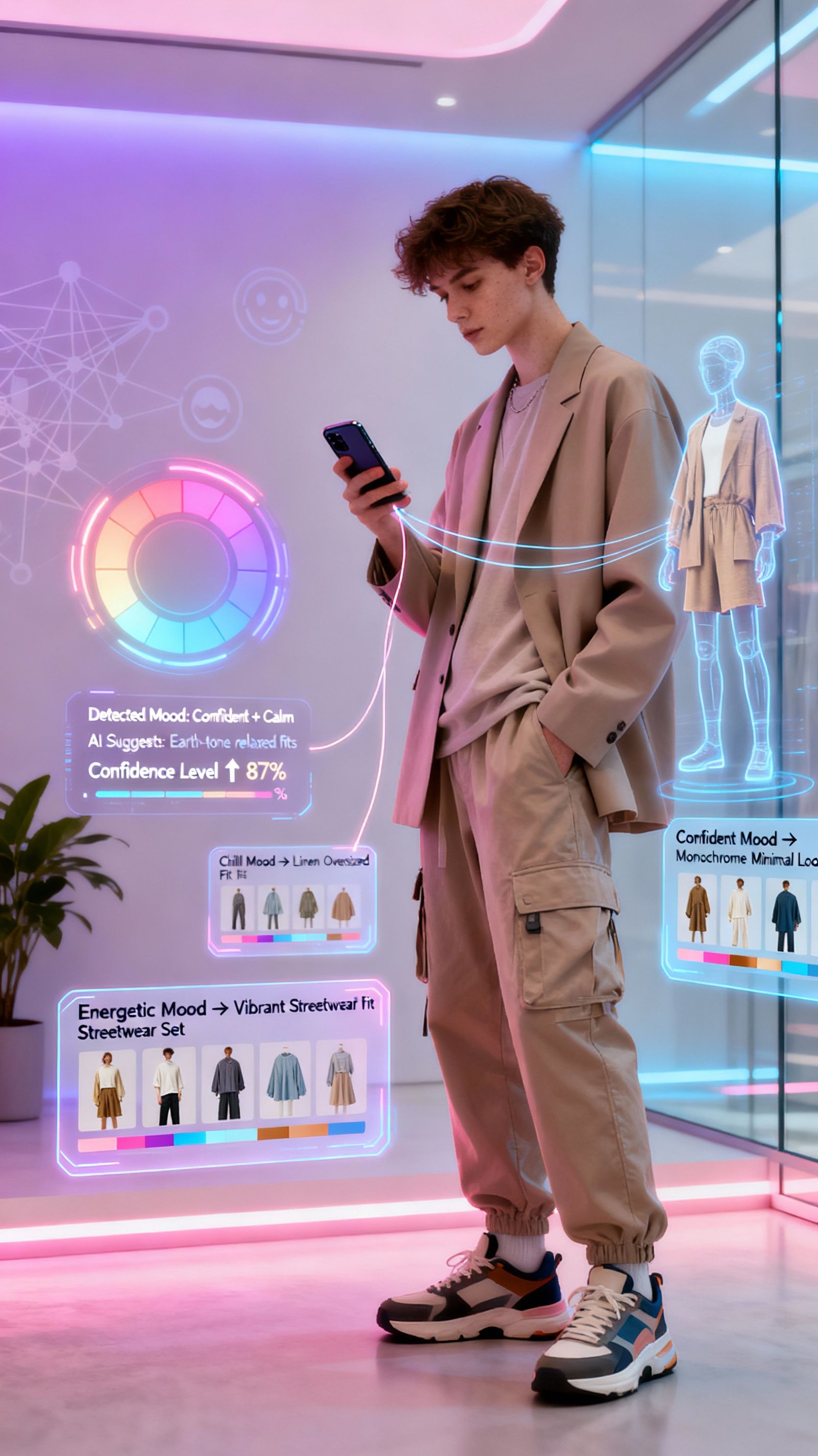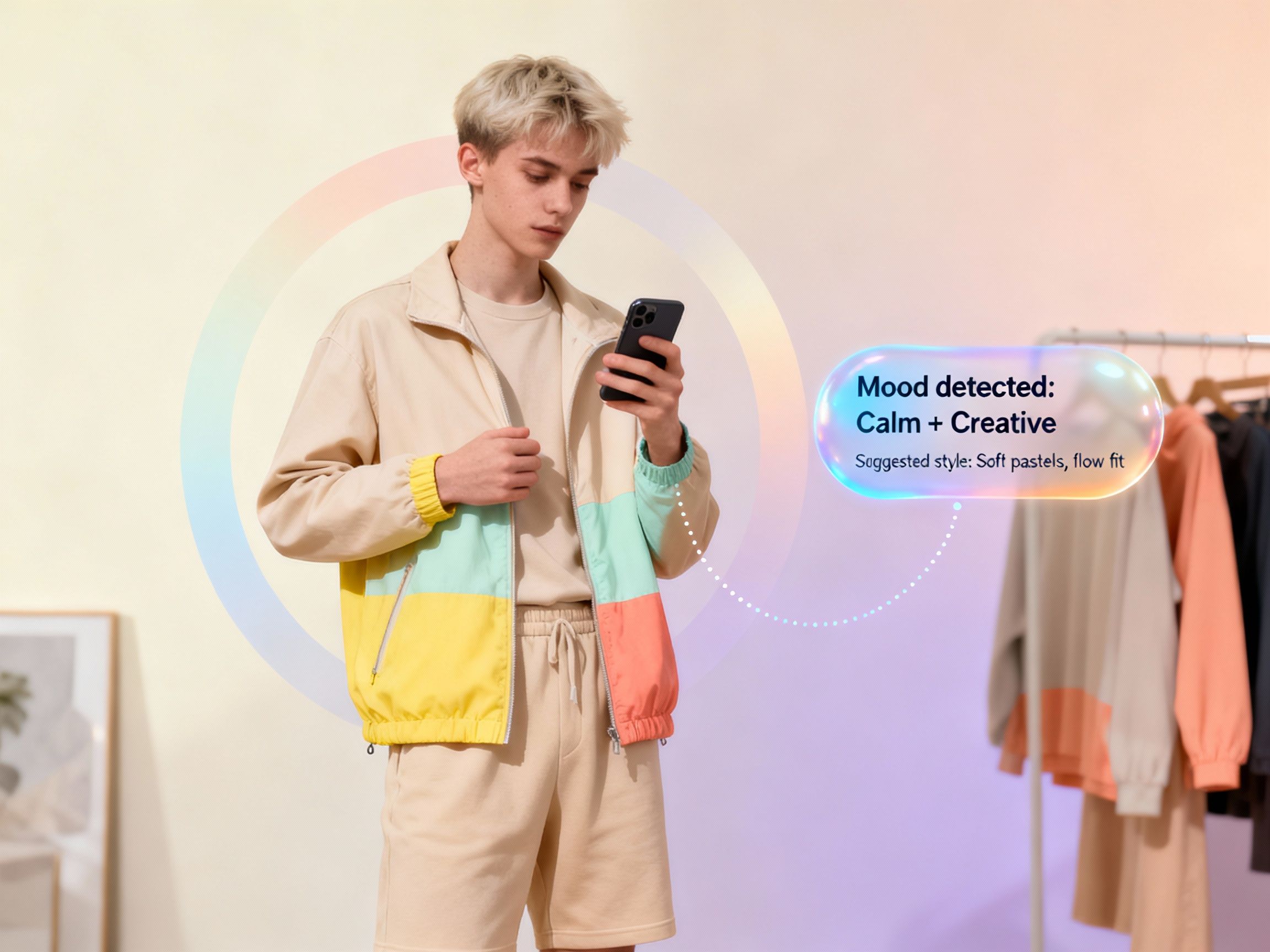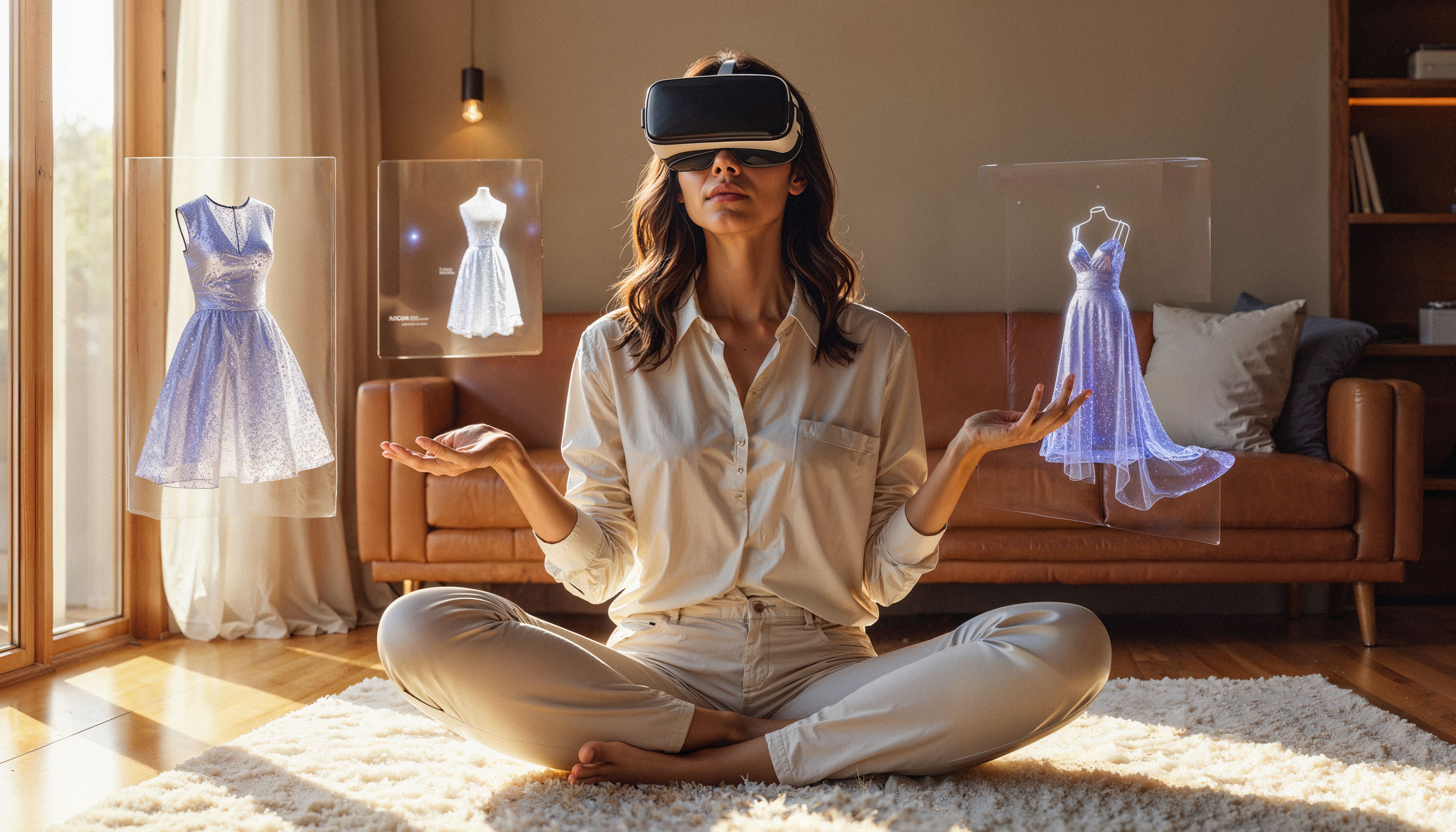AI Fashion Models From the Inside Out
How Artificial Emotional Intelligence Shapes Fashion


TL;DR
Gen Z’s vibe check just went digital. With artificial emotional intelligence, AI stylists like Glance decode feelings to create mood-driven outfits that match energy, confidence, and context, turning every scroll into an act of self-expression and emotional awareness.
When Your Outfit Gets You
You know that moment when you put on a hoodie that just feels right after a long day? That’s emotional intelligence in motion and now, it’s coded into fashion through artificial emotional intelligence systems.
Picture this: you open your phone after a long day, and your AI Stylist subtly switches your feed from bold streetwear to calm, cozy fits. No prompts needed, it just senses your slower scrolls and longer pauses, reading your mood through patterns, not questions.
That’s where artificial emotional intelligence (AEI) comes in, technology that understands your feelings and curates fashion around them. For Gen Z, fashion isn’t about dressing up; it’s about dressing in sync with your energy. And platforms like Glance are taking note, translating micro-emotions into mood-driven outfits that understand what you need before you do.
Why Gen Z Demands Emotionally Intelligent Fashion

Gen Z doesn’t follow trends, they personalize them. According to Morning Consult, young consumers place higher trust in digital-first brands. And with tools powered by artificial emotional intelligence, personalization feels even more intuitive.
That’s why mood-driven outfits are rising. They blend self-care with style, turning dressing into a form of emotional regulation. Whether it’s dopamine dressing after a tough week or minimalist fits for focus days, Gen Z uses clothes to express emotional states — not to hide them.
As cited by MARTECH, a Motista study showed that customers emotionally connected to brands have a 306% higher lifetime value (5.1 years) than satisfied customers (3.4 years). Emotional connection isn’t marketing fluff anymore it’s measurable impact.
So when your wardrobe reflects your vibe, your confidence spikes and that’s the new non-binary fashion moment in Gen Z language: self-affirmation through aligned aesthetics enabled by artificial emotional intelligence.
Did you know? In the early 2000s, “mood rings” tried to show your emotions through color. Two decades later, AI stylists are doing the same but with algorithms that actually work to build smarter mood-driven outfits.
How AI Senses Mood: The Tech Behind the Threads
Here’s the science behind the “fashion feels.”
Artificial emotional intelligence integrates cues like text sentiment, browsing time, and outfit interaction patterns to infer emotional states.
McKinsey reports show increasing investment in AI for various applications, including personalization, and that 73% of fashion executives see generative AI as a priority for 2024.
AI systems like Glance’s Self-Learning Personalization Engine use behavioral signals such as:
- Dwell time: how long you linger on a piece
- Swipe tempo: fast swipes = exploration; slow swipes = focus
- Sequence flow: what you browse before and after adding to cart
Then comes the design science color and texture psychology.
According to Insights Psychology, warm tones such as yellow and orange are known to uplift mood and evoke feelings of optimism in individuals. That’s how mood-driven outfits are shaped: grounded in your digital emotion patterns and psychological responses.
Personalization in Practice: When AI Stylists Do the Vibe Check
Picture this:
You linger on pastel cardigans late at night and your AI Stylist interprets calm energy. The next morning, it suggests flowy fits with muted tones to extend that peace, a perfect example of artificial emotional intelligence turning micro-signals into tailored mood-driven outfits.
Let’s see how leading platforms apply this:
Platform | Approach | Emotional Feature |
Glance | Real-time personalization | Detects emotional shifts to suggest adaptive fits |
The Yes (by Pinterest) | Preference learning | Matches style to mood statements |
Stitch Fix | Feedback loops + ML | Tracks joy or hesitation in feedback to adjust suggestions |
Amazon Fashion | Predictive algorithms | Integrates sentiment analytics in recommendations |
Using its Fashion Intelligence Model, Glance goes deeper by creating evolving AI Twins digital reflections of your style energy. When your emotional rhythm shifts, so do the suggestions, powered fully by artificial emotional intelligence.
And according to Deloitte Digital’s research, brands with more mature personalization capabilities saw greater improvement across key customer metrics, including engagement, satisfaction, order value and lifetime value.
Challenges and Ethical Considerations
But can an algorithm really understand human emotion? That’s the question shaping the next wave of fashion tech.
According to the survey, 50% of U.S. adults believe the increased use of AI in society will worsen people's ability to form meaningful relationships, while only 5% think it will improve this skill.
That’s why ethical design matters. Glance integrates bias filters to ensure inclusive representation recognizing diverse emotional and cultural expressions. Transparency also matters: users should know how their data is used to generate mood-driven outfits.
As Gen Z demands authenticity, ethical AI becomes a style statement of its own.
The Future of Fashion: Emotion, Technology, and Identity

What’s next for fashion with feelings? Think:
- Mood-adaptive fabrics that change color based on temperature or heart rate
- AI Stylists predicting stress and recommending balanced tones
- Emotional wardrobe analytics showing how your outfits affect your mood trends over time
The U.S. AI-in-Fashion market was valued at about USD 384 million in 2023 and is expected to grow at a CAGR of 38.7% through 2029.
Platforms like Glance are moving in this direction by refining how they read user preferences and subtle mood signals. Rather than just suggesting items, they surface pieces that better match a user’s current style mood, contributing naturally to more mood-driven outfits.
Because the future of fashion isn’t about algorithms replacing intuition it’s about AI amplifying emotional intelligence so users feel seen, supported, and stylish.
Conclusion: Dressing in Emotional 4K
Fashion used to be about how you looked. Now it’s about how you feel and how your AI Stylist feels with you.
With artificial emotional intelligence, every scroll and swipe becomes an act of self-awareness. Platforms like Glance don’t just personalize; they empathize learning your patterns, moods, and comfort triggers.
When your wardrobe understands your emotions, style stops being performative. It becomes a personal daily act of emotional alignment, powered by technology that listens before it suggests.
So next time your outfit gets your mood just right, remember your AI Stylist just passed the vibe check.
FAQs
Q1: What is artificial emotional intelligence in fashion?
It’s AI that recognizes emotional patterns through user behavior and suggests mood-driven outfits.
Q2: How do mood-driven outfits help Gen Z?
They enhance comfort, authenticity, and creativity matching style with emotional states through artificial emotional intelligence.
Q3: Are AI Stylists replacing human designers?
No. They assist by offering emotionally intelligent recommendations, not creative direction.
Q4: What makes Glance unique?
Glance acts as an intelligent shopping agent, adapting to user mood, timing, and context, not a static avatar.
Q5: What’s next in AI emotional styling?
Expect more emotion-aware designs, adaptive elements, and analytics that deepen how mood-driven outfits evolve with user feelings.






